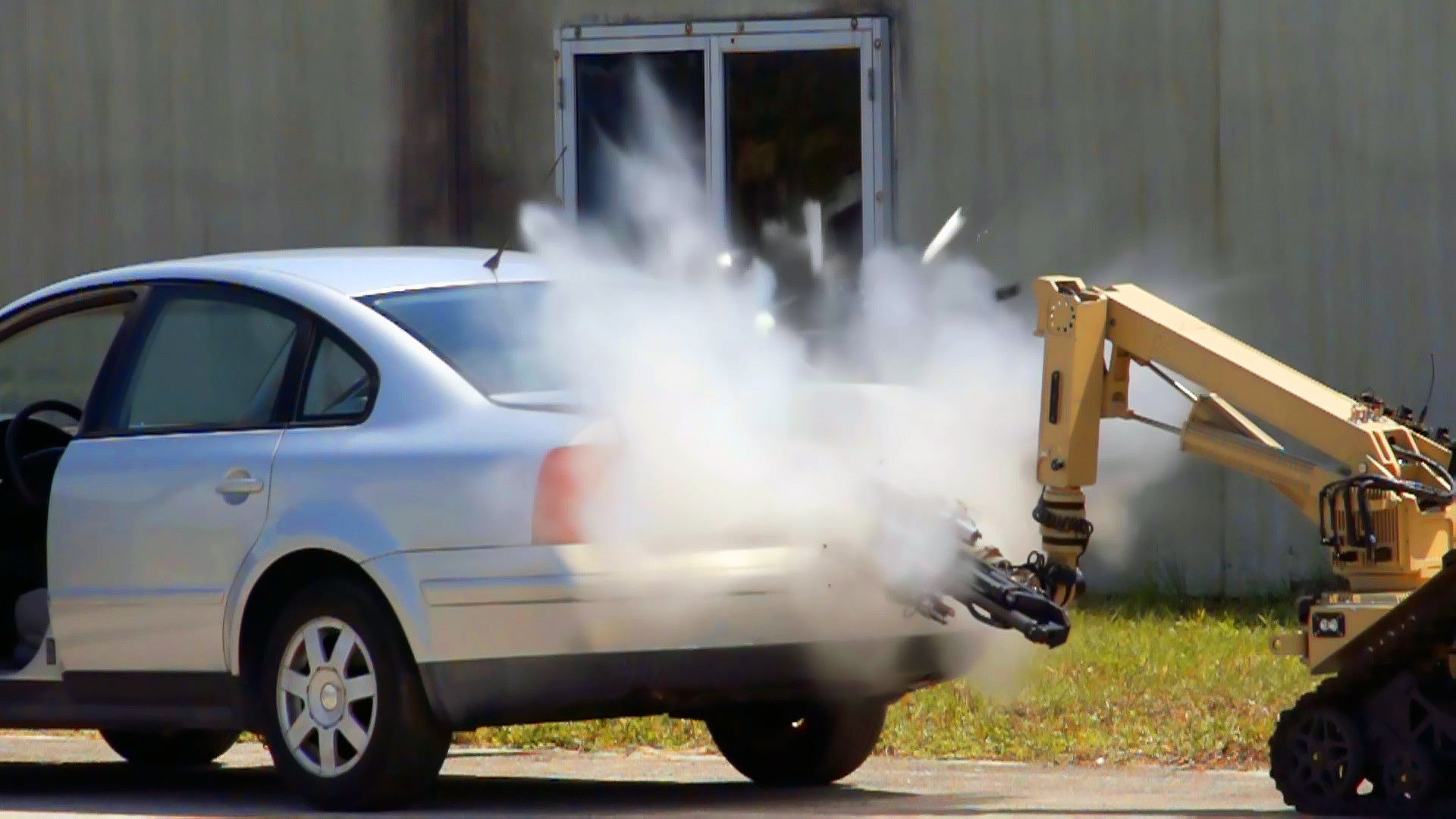Why do EOD teams shy away from high-recoil disruptors?
Historically, without bomb disposal robots, EOD teams would utilise the most powerful disruptors possible to access and defeat explosive threats quickly and efficiently. While powerful enough to readily achieve mission success, the downside was that EOD experts in protective disposal suits would typically place these disruptors by hand, still putting lives at risk.
Military and security officials introduced robots to alleviate this risk to life by keeping EOD personnel out of harm’s way. Disruptors were instead mounted onto these robots, aimed and fired remotely from a safe distance. The issue with this approach was that many robots were not sufficiently robust or resilient enough to handle the blast from high-power disruptors, and would often break or get damaged. This is still true today – a lot of robots available on the market are simply not built for the kind of power provided by disruptors such as HOTROD and PIGSTICK, used within the UK, and PAN, in the U.S.
EOD teams therefore began to make compromises rather than risk any costly or debilitating damage to the robot and instead started to turn to one of two options:
Low-recoil disruptors
A less-powerful alternative to their high-recoil equivalents, low-recoil disruptors don’t produce as much recoil but also don’t put as much energy on target, reducing the blast’s overall impact effectiveness. Multiple shots are required to achieve what a high-recoil disruptor could generally do in one.
Recoilless disruptors
These disruptors fire their energy out both the front and the rear of the disruptor with the aim of both blasts cancelling each other out and eliminating any recoil. The issue is a lot of this energy then goes in the wrong direction; half into the target and half wasted out of the back. Some disruptors even take a ‘slip-grip’ approach to mounting, allowing the disruptor to jettison out of the back once fired. This runs the risk of causing damage to anything behind the robot due to the dangerous projectile it ejects, as well as to the robot itself, which happens often. Recoilless disruptors can be mechanically complex, making them ultimately more expensive and less reliable.
Neither of these options are a suitable substitute for the power, efficiency and reliability provided by high-recoil disruptors. L3Harris’ approach ensures EOD teams don’t have to compromise to achieve mission success. T7 and T4 robots are purpose-built to handle the intensity of these essential tools.

